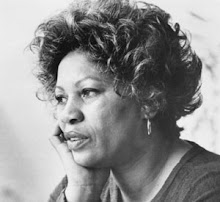My hypothesis for creating the "Beloved" and "The Bluest Eye" maps below was that there would be an obvious pattern moving northern from individual's cities of origin. The movement from the maps are similar in that all journeys labeled start in the southern United States and moved upward toward the North and the Midwest. The significance behind this movement is that it historically mimics the Great Migration of African-Americans during the 1910s to the 1930s. Although the reasons for the migration weren't explicitly stated within Morrison's novels, the primary motives for moving northward (and in some cases westward) were to escape the slavery mindset and southern racism, the rise of industrialization and the creation of more jobs, and northern states were more sympathetic towards black and offered them more rights such as an education.
The novel "Beloved" is the most conscious of the Great Migration. Paul D's journey is the most scattered regarding the places he's traveled, but in the novel he's the most aware of the freedom associated with the North. When he's leaving the Cherokees, he calls the North "Free North. Magical North. Welcoming, benevolent North (Beloved, 132)." The North becomes his most desirous place to live because it offers him a sense of escape from his role as a slave in the South. Additionally, Paul D shows his knowledge of the industrialization and job opportunities in Ohio stating that although the grain businesses was booming elsewhere, "Cincinnati was still the pig port in the minds of the Ohioans (181)," and in the winter "Cincinnati reassumed its status of slaughter and riverboat capital (182)." I would like to note that in her novels, it was only men who actually participated in industrialized jobs while women usually kept house or sold their domestic work elsewhere.
The use of the Ohio River in "Beloved" is historically significant because it was the dividing line between free states and slaves states. Denver's birth on the banks of the Ohio is symbolic figuratively and literally. In one case, her freedom is debatable because she's born to a slave woman and therefore is claimable as a possession of her mother's master. On the other hand, her birth on the liminal space dividing the free land from slave land could be argued as allowing her to transgress past slavery.
Wednesday, March 18, 2009
Subscribe to:
Post Comments (Atom)

No comments:
Post a Comment